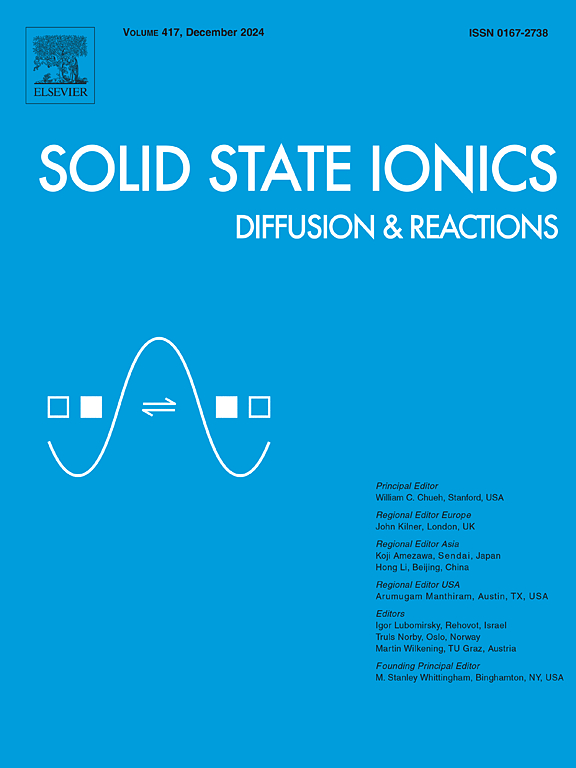固态电解质电池中超离子电导率的优化
IF 3.3
4区 材料科学
Q3 CHEMISTRY, PHYSICAL
引用次数: 0
摘要
固态电解质(SSE)已被开发用于取代锂离子电池中使用的更危险和易燃的液体电解质。目前,电池研究人员正在努力寻找合适的化学元素,以形成化学稳定的SSE晶体结构,这也允许与最知名的液体电解质(10−2 Scm−1)相当的大离子电导率。在给定的SSE中,提高离子电导率的唯一方法是选择正确的化学元素组合,而这种选择实际上是有限的,因为元素周期表中可用的阴离子和阳离子数量有限。此外,晶体结构和体积(有或没有缺陷)的影响进一步使评估和优化离子电导率的任务复杂化,因为增加导电维度(1D到3D)或晶体体积并不一定会增加离子电导率,因为导电阳离子和SSE晶体离子之间存在排斥和吸引相互作用。因此,我们的策略是首先利用电离能理论(IET)从第一原理推导离子输运机制。之后,我们将用已建立的固体离子导体的实验数据验证我们的离子电导率公式,该公式也可用于评价和提高SSE的超离子电导率。本文章由计算机程序翻译,如有差异,请以英文原文为准。
Optimization of superionic conductivity in batteries with solid-state electrolytes
Solid-state electrolytes (SSE) have been developed to replace the far more hazardous and flammable liquid electrolytes used in Li-ion batteries. Presently, battery researchers are struggling to find the suitable chemical elements that can form chemically-stable SSE crystal structure, which also permits large ionic conductivity comparable to the best known liquid electrolytes (10 Scm). The only way to enhance ionic conductivity in a given SSE is to select the right combinations of chemical elements, and this option is actually limited due to finite numbers of available anions and cations from the Periodic Table. In addition, the influence of crystal structure and volume (with or without defects) further complicates the tasks of evaluating and optimizing the ionic conductivity where increasing conduction dimensionality (1D to 3D) or crystal volume does not necessarily increase the ionic conductivity due to repulsive and attractive interactions between conducting cations and SSE crystal ions. Therefore, our strategy here is to first derive the ionic transport mechanism from the first principles using the ionization energy theory (IET). After which, we shall validate our ionic conductivity formula with the experimental data of well-established solid ionic conductors, which can also be used to evaluate and improve the superionic conductivity of SSE.
求助全文
通过发布文献求助,成功后即可免费获取论文全文。
去求助
来源期刊

Solid State Ionics
物理-物理:凝聚态物理
CiteScore
6.10
自引率
3.10%
发文量
152
审稿时长
58 days
期刊介绍:
This interdisciplinary journal is devoted to the physics, chemistry and materials science of diffusion, mass transport, and reactivity of solids. The major part of each issue is devoted to articles on:
(i) physics and chemistry of defects in solids;
(ii) reactions in and on solids, e.g. intercalation, corrosion, oxidation, sintering;
(iii) ion transport measurements, mechanisms and theory;
(iv) solid state electrochemistry;
(v) ionically-electronically mixed conducting solids.
Related technological applications are also included, provided their characteristics are interpreted in terms of the basic solid state properties.
Review papers and relevant symposium proceedings are welcome.
 求助内容:
求助内容: 应助结果提醒方式:
应助结果提醒方式:


